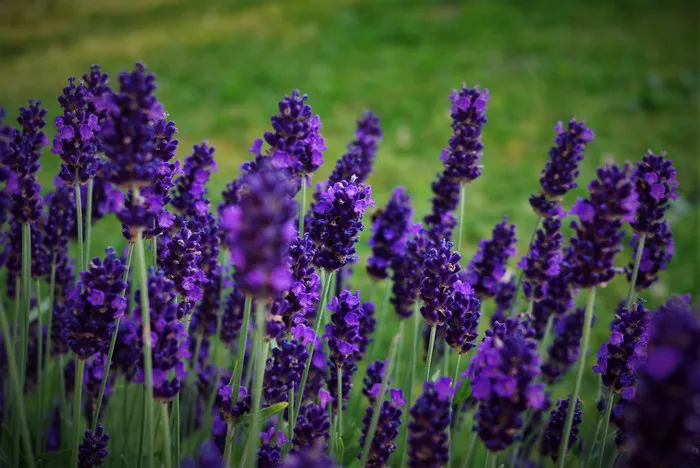Lavender, with its delicate fragrance and beautiful purple blooms, is not only a beloved garden plant but also a versatile herb used in culinary, medicinal, and aromatherapy applications. Drying lavender flowers is a fantastic way to preserve their beauty and fragrance, allowing you to enjoy them long after they’ve been harvested. In this comprehensive guide, we’ll explore the various methods and best practices for drying lavender flowers effectively.
Selecting the Right Lavender Varieties
Before diving into the drying process, it’s essential to choose the right lavender varieties for drying. While many lavender varieties can be dried, some are better suited for this purpose than others. English lavender varieties such as Lavandula angustifolia, Lavandula x intermedia, and Lavandula stoechas are popular choices due to their high oil content and strong fragrance. These varieties yield the best results when it comes to drying lavender flowers for culinary and aromatherapy purposes.
Harvesting Lavender Flowers
Timing is crucial when harvesting lavender flowers for drying. Ideally, you should harvest lavender flowers when they are in full bloom but before they start to wilt or fade. The best time to harvest is in the morning after the dew has dried but before the sun gets too hot, as this is when the essential oils are most concentrated.
When harvesting lavender flowers, use sharp scissors or pruning shears to cut the stems just above the leaves. Avoid cutting into old wood, as this can harm the plant and inhibit future growth. It’s also essential to leave some foliage on the plant to support its growth and health.
Preparing Lavender Flowers for Drying
Once you’ve harvested your lavender flowers, it’s time to prepare them for drying. Start by removing any excess foliage and debris from the stems. Then, gather the lavender stems into small bunches, tying them together with twine or rubber bands.
When bundling lavender stems, aim for compact bunches to promote even drying and prevent mold or mildew growth. Avoid overcrowding the stems, as this can hinder airflow and lead to poor drying results.
Choosing the Right Drying Method
There are several methods for drying lavender flowers, each with its advantages and considerations. The most common methods include air drying, oven drying, and using a dehydrator. Let’s explore each method in more detail:
Air Drying:
Air drying is the simplest and most traditional method for drying lavender flowers. To air dry lavender, hang the bundled stems upside down in a warm, dry location with good airflow. A well-ventilated room or a covered outdoor area works well for this purpose.
Ensure that the drying location is away from direct sunlight, as prolonged exposure to sunlight can cause the flowers to lose their color and fragrance. Depending on environmental conditions, air drying lavender flowers can take anywhere from one to three weeks.
Oven Drying:
Oven drying is a quicker method for drying lavender flowers, making it ideal for those who want to expedite the drying process. To oven dry lavender, preheat your oven to its lowest setting (usually around 180°F or 80°C).
Spread the lavender stems in a single layer on a baking sheet lined with parchment paper, making sure not to overcrowd them. Place the baking sheet in the preheated oven and leave the door slightly ajar to allow moisture to escape.
Check the lavender flowers regularly to prevent over-drying, as they can become brittle and lose their fragrance if left in the oven for too long. Depending on the oven temperature and humidity levels, oven drying lavender flowers typically takes one to two hours.
Using a Dehydrator:
A food dehydrator offers a convenient and efficient way to dry lavender flowers while preserving their color and fragrance. To use a dehydrator, spread the lavender stems in a single layer on the dehydrator trays, making sure to leave space between the stems for airflow.
Set the dehydrator to a low temperature (around 95°F or 35°C) and allow the lavender flowers to dry for several hours, checking them periodically for dryness. Depending on the dehydrator model and the moisture content of the flowers, drying lavender with a dehydrator can take six to twelve hours.
Storing Dried Lavender Flowers
Once your lavender flowers are dry, it’s essential to store them properly to maintain their quality and fragrance. Store dried lavender flowers in airtight containers such as glass jars or resealable plastic bags to protect them from moisture and light.
Place a small sachet of dried lavender flowers in your linen closet or dresser drawers to impart a pleasant scent to your linens and clothing. You can also use dried lavender flowers in potpourri, sachets, herbal teas, bath salts, and other DIY projects.
Conclusion
Drying lavender flowers is a rewarding process that allows you to preserve their beauty and fragrance for long-term enjoyment.
Whether you prefer the traditional method of air drying or opt for the convenience of oven drying or using a dehydrator, following the tips and techniques outlined in this guide will help you achieve excellent results.
By selecting the right lavender varieties, harvesting at the optimal time, and choosing the appropriate drying method, you can create beautifully fragrant dried lavender flowers that can be used in various culinary, medicinal, and aromatherapy applications. So why wait? Start drying lavender flowers today and unlock their myriad benefits and uses!


